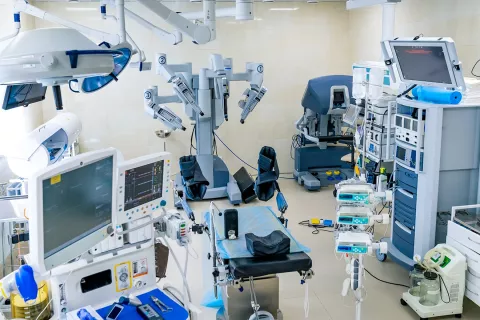
Since the onset of Coronavirus Disease 2019 (COVID-19), Health and Human Services (HHS) has declared a Public Health Emergency. The US FDA, since then, has been releasing various enforcement policies to ensure continued supply of certain essential medical devices, which play a vital role in prevention, diagnosis, management and treatment of COVID-19 and associated co-morbidities. A new enforcement policy has been released by the US FDA to facilitate the increased supply of coagulation systems used for assessing the viscoelastic properties of whole blood and the hemostasis in patients.
It has been observed that, the patients infected with COVID-19, especially those with Acute Respiratory Distress Syndrome (ARDS), had presented an increased risk for blood clotting, known as hypercoagulability. The health care providers need to have quick access to certain devices used in measuring the dynamics of clot formation, firmness and dissolution, as affected by the kinetics of thrombin generation, platelet activation, fibrin generation, clot strength, clot stability and inhibitory effects in whole blood, within the hospital settings, to facilitate patient management during perioperative period of certain surgeries, traumatic injuries, etc.
The current enforcement policy is applicable to certain modifications made to legally marketed coagulation systems used for measuring the viscoelastic properties of whole blood and multipurpose systems used for in-vitro coagulation studies regulated under 21 CFR 864.5430 (Product code JPA) and 21 CFR 864.5425 (Product code QFR), respectively. These devices fall under Class II and require a Pre-Market Notification (PMN) and a new 510(k) application (for any post approval changes) to be submitted and cleared before the new versions are marketed in the United States.
These devices are originally, not intended for use in a hospital setting but certain changes, that do not pose risk to the safety of patient, could be made in indications or in hardware or software components, to facilitate their use in hospital settings. The FDA has identified that, the following modifications qualify under the policy:
- expansion of use for assessment of samples from patients hospitalized due to COVID-19 for indications (assessment of coagulation status of perioperative and trauma patients) cleared under the original 510(k)
- use under hospital patient healthcare settings in addition to previously indicated use in hospital clinical laboratories
- software or/and hardware modifications to facilitate relocation of devices to patient healthcare settings or reduce electromagnetic emissions to prevent any kind of interference to other systems in the vicinity
Any hardware or software changes that impact the measuring capabilities or functionalities of device; or any modifications to indication of use that indicate use of test results generated from these devices as primary source of information for diagnosis or treatment of coagulopathy associated with COVID-19 are expected to pose significant risk to the patient and the current enforcement policy will not be applicable. The newer versions of the approved devices with these changes shall undergo detailed review process and will be 510(k) cleared, before they are marketed.
Though this enforcement policy enables introduction of the aforementioned changes to market the device in the United States, without any prior approval from the US FDA, manufacturers should comply with the regulations applicable to medical devices. The manufacturers should carryout verification and validation for all the changes introduced, as required under Design controls section of Quality System Regulation (QSR) and the changes shall be documented in the Device Master Record (DMR). The manufacturers should comply with other regulations such as 21 CFR Part 806 for reports of corrections and removals, 21 CFR 803 for medical device reporting, 21 CFR 801 for general labeling and 21 CFR 809 applicable for IVD products for human use. The devices, with the new modification incorporated, should also comply with IEC 60601-1-2 and IEC 61010-1 standards.
The devices marketed based on this enforcement policy should update their device labels and should ensure that they include detailed information on changes introduced to functionality, hardware/software, performance characteristics than in the original approved device; instructions for use; required installation and qualification tests; post-installation inspection, calibration, testing and maintenance; instructions / precautions to mitigate any known or anticipated risks. The labels should also include statement that the devices are intended for use only as adjunctive and should not be used as primary means for diagnosis of coagulopathy. Details of interfering substances, specifications of any additional labware to be used such as pipettes shall be included. A statement mentioning that the device is not intended for diagnosis of COVID-19 and that the results shall be interpreted by a licensed healthcare professional with adequate training should also be included in the label.
This enforcement policy ensures timely access to medical devices required for co-morbidity and patient management in times of COVID-19 pandemic. Reach out at a device Regulatory expert to gain comprehensive insights about the update to comply with the regulations while marketing the devices.
Also learn about Emergency Use Authorizations and Enforcement Policies during Covid pandemic.









